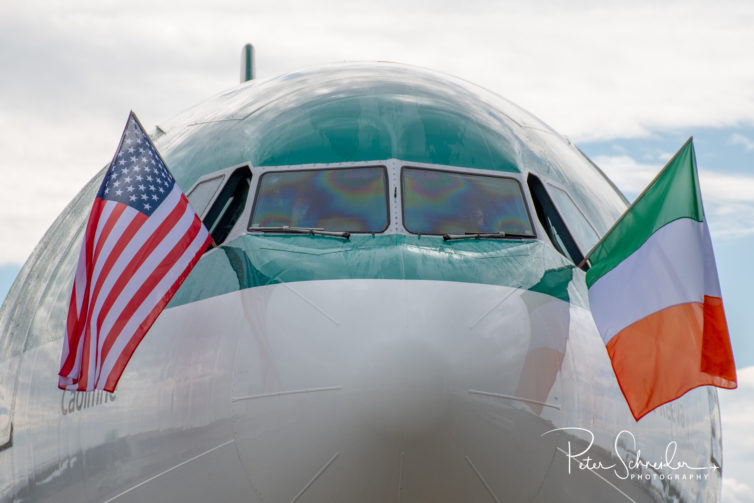
The Irish and American flags were flown as Aer Lingus’ inaugural flight taxied to the gate
On May 18, yet another European airline started non-stop service to Seattle: Ireland’s Aer Lingus is now connecting Dublin with Seattle four times weekly.
The first ever pre-cleared transatlantic flight into Seattle, Aer Lingus EI 143 touched down ahead of schedule at 4.55 p.m.
Until this inaugural, Dublin was the largest European city without direct service from Seattle. Aer Lingus is using an Airbus A330-200 on the route, and flies on Monday, Wednesday, Friday, and Sunday from departing at 5.35 p.m.
-
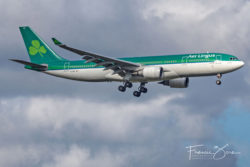
-
An Aer Lingus A330-200 landing at Seattle-Tacoma International Airport.
-
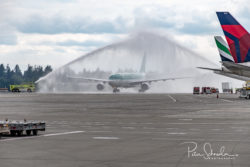
-
The Port of Seattle Fire Department welcomed Aer Lingus with a customary water cannon salute
-
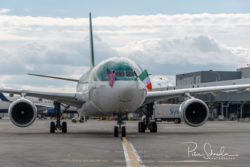
-
Flying the flags
Aer Lingus COO Mike Rutter said ’œWe are delighted to commence Ireland’s first and only direct service to Seattle, Washington State, with four direct flights each week. Seattle as a destination holds great promise for Aer Lingus given the strong business ties between the two regions making this an important route for business travel as well as leisure trips as exemplified by the high demand for business class tickets on the route to date.’
With the strong demand Aer Lingus is seeing in this route, the airline is apparently already looking at eventually increasing the frequency from four to seven flights per week.
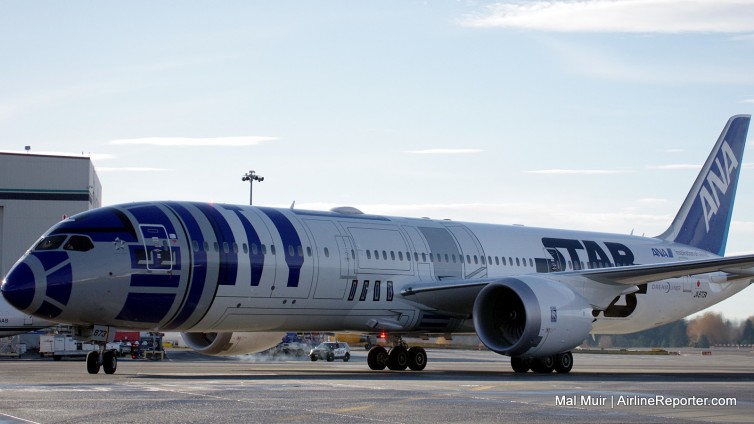
ANA’s Star Wars R2-D2 arrives to gate S16 at SeaTac. This was the first time the aircraft had been deployed to Seattle.
My initial assignment, with AirlineReporter long ago, was to cover the arrival of the first ANA 787 to Seattle. It is befitting that my long history with AirlineReporter officially ends with another ANA 787; this time though it is the ultimate 787 – the R2-D2 Star Wars jet.
The special 787-9 rolled out in October and began service later that month to Vancouver. Now that it is operating out in the wild, I eagerly awaited my opportunity to spot it in my current hometown of Seattle. Being a Star Wars and Astromech droid fan myself (R5s are better than R2s in my opinion), how could I not take this on?
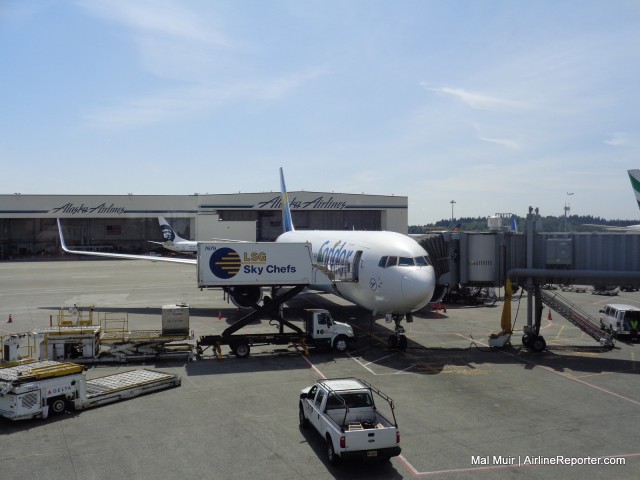
My ride to Frankfurt, a Condor 767-300ER (reg: D-ABUB)
I recently decided to take a trip over to Frankfurt for a few days and, thankfully, I was able to take it in Premium Economy.
This was going to be my first flight with Condor, and also my first taste of a long-haul leisure carrier (think low-cost, but to vacation destinations). I was flying on their non-stop service from Seattle to Frankfurt. Adding to the number of firsts for me were also a new airport (Frankfurt) and my first time flying internationally out of Seattle.
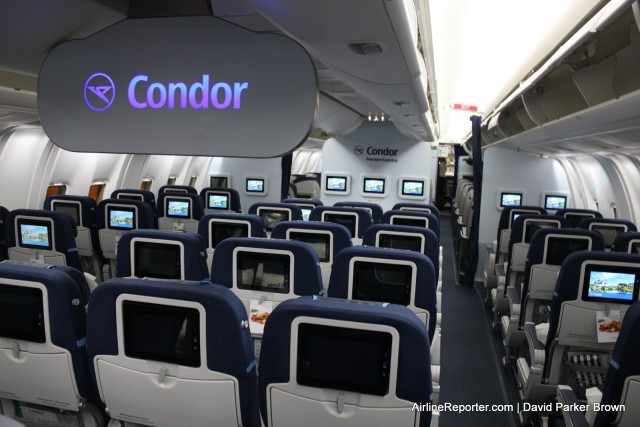
The Premium Economy section in Condor’s 767
The flight was scheduled to depart mid-afternoon, which for me felt a little bit different than normal. Generally, I end up on flights departing first-thing in the morning or late in the evening. So having most of the day to relax, make final packing arrangements, and spend time with my wife was a good thing. The bad part is being prime time for international departures out of Seattle. This meant that while the line for check-in with Condor was short, even with priority access, security would be an absolute mess.
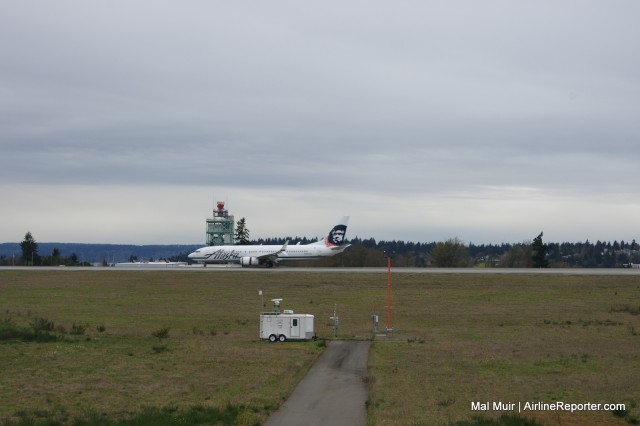
One of two avian radars located at SEA. This one is in a ditch adjacent to the third runway.
Have you ever looked up in the sky, seen a hawk or eagle soaring, and admired the beauty? Although exciting, the birds can cause major problems for aviation.
The ’œMiracle on the Hudson’ is a prime example of why birds and aircraft do not mix. But what do airports do to ensure that our journeys, from one airport to the next, are safe? I recently took a tour of Seattle-Tacoma International Airport (SEA) and saw what their wildlife management team was doing to keep both airplanes and birds safe.
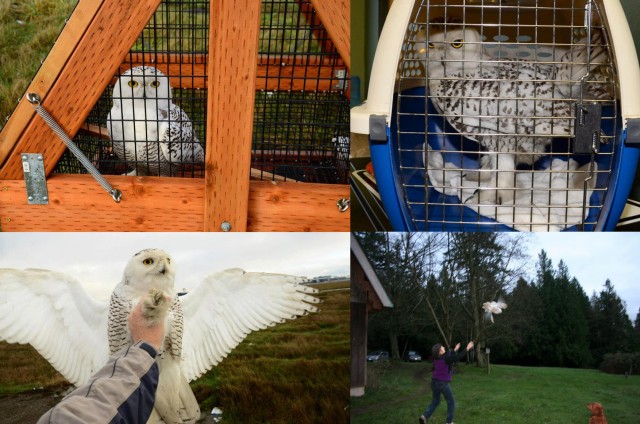
A Snowy Owl is captured at SEA, then released in the upper part of Washington state, near Bellingham – Photo: SEA
SEA has been a leader in wildlife management since the 1970s, when they were the first airport to hire a dedicated wildlife biologist onto their staff. At the moment, Steve Osmek runs the wildlife program at the airport and has done so for a number of years. Previously coming from the USDA and NOAA, he gets to combine his love of animals and an interest in aviation into on job. It was Steve who took me around the airport and introduced me to a number of ways that the airport is helping to mitigate bird strikes.








